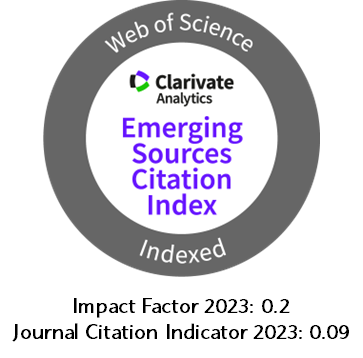Investigating the effect of land use changes on soil erosion using RS-GIS and AHP-Fuzzy based techniques (Case Study: Qaresu Watershed, Ardabil, Iran)
DOI:
https://doi.org/10.5377/nexo.v33i02.10789Keywords:
Fuzzy Logic, Land Use, Maximum Likelihood, Water Erosion, Weighted Linear CombinationAbstract
The intensity of soil erosion to occur in a region depends on multiple factors including climatic conditions, elevation, terrain, soil type, and land use. Among these factors, land use is one of the particular importance as it reflects the outsized role of humans in the exacerbation of erosion condition. This study aimed to investigate the effects of land use changes on soil erosion in Qaresu watershed, using Remote Sensing (RS) and Geographical Information System (GIS) techniques, a watershed with an area of 4370.8 km2 located in the center of Ardabil province, northwest of Iran. For this purpose, the 1985 and 2015 Landsat images captured by TM and OLI-TIRS sensors were used to develop the land use maps of the watershed area using the maximum likelihood method. The erosion zoning maps were then developed by integrating the maps of land use, slope, lithology, distance from roads, distance from streams, precipitation, and soil using the Weighted Linear Combination (WLC) method after an AHP-based weighting stage. The results showed that in the 30-year period from 1985 to 2015, the region has experienced a decrease in the area of forest, dry farming, and rangeland land uses and an increase in the area of land uses defined as urban, barren, irrigated farming, and water cover. In total, dry farming and rangeland were the largest land-uses in the studied area. According to the developed erosion zoning maps, in 1985, 14.4% and 36.84%, and in 2015, 15.64% and 32.3% of the studied area belonged to high and very high risk zones in terms of erosion potential, respectively. In defined two periods, high risk and very high risk zones were mostly positioned over dry and irrigated farmlands.
Downloads
488
Downloads
Published
How to Cite
Issue
Section
License
The authors who publish in Nexo Scientific Journal agree to the following terms:
- Authors retain the copyright and grant the journal the right of the first publication under the license Creative Commons Attribution License, which allows others to share the work with a recognition of the authorship of the work and the initial publication in Nexo Scientific Journal.
- Authors may separately establish additional agreements for the non-exclusive distribution of the version of the work published in the journal (for example, in an institutional repository or a book), with the recognition of the initial publication in Nexo Scientific Journal.
- Authors are allowed and encouraged to disseminate their works electronically (for example, in institutional repositories or in their own website) before and during the submission process, as it can lead to productive exchanges, as well as earlier and greater citation of published works.










